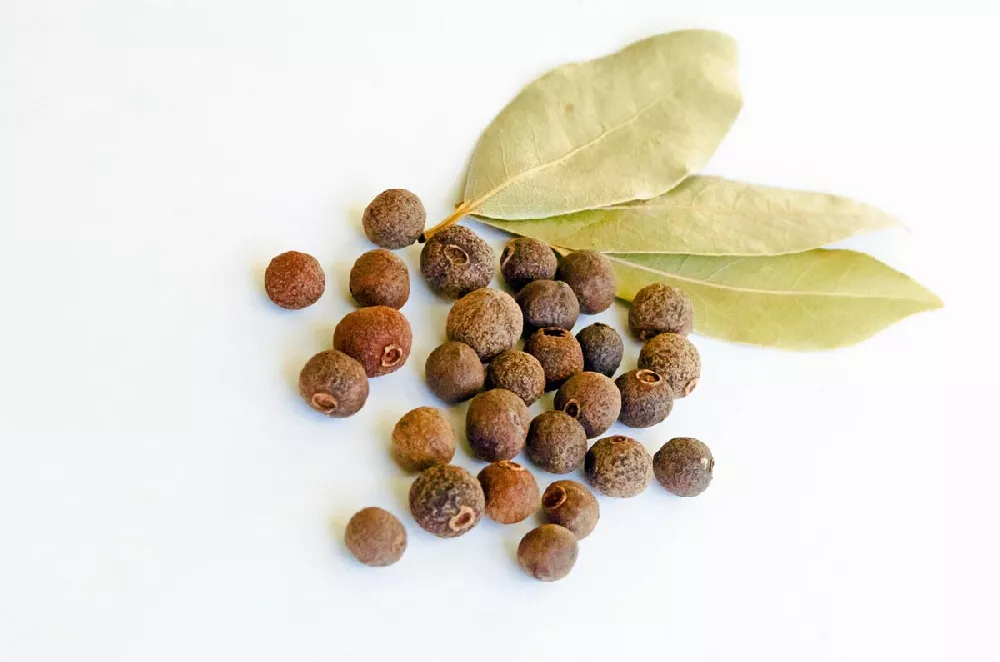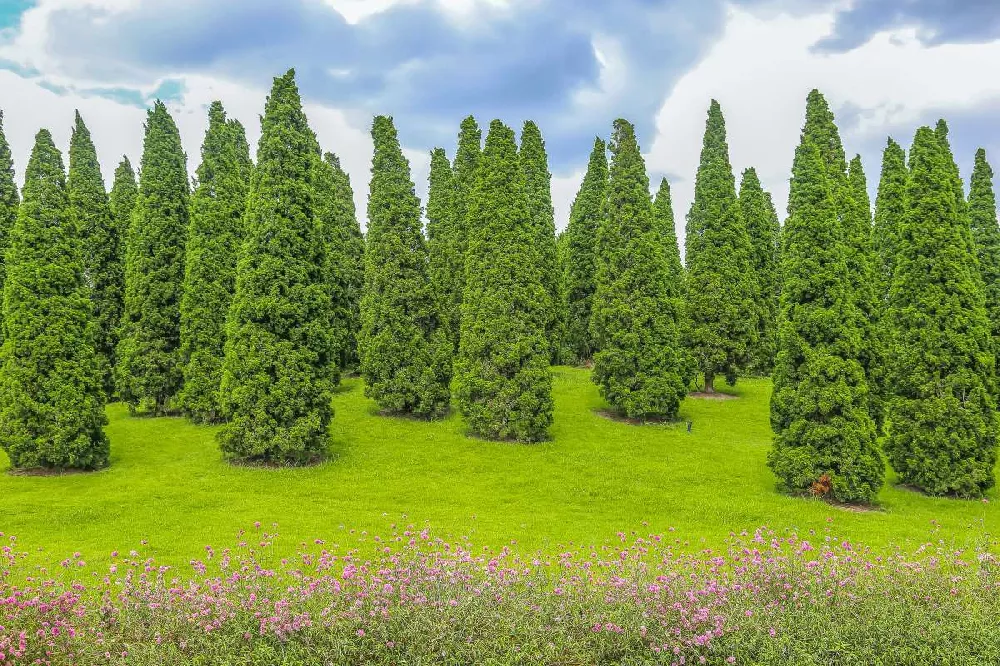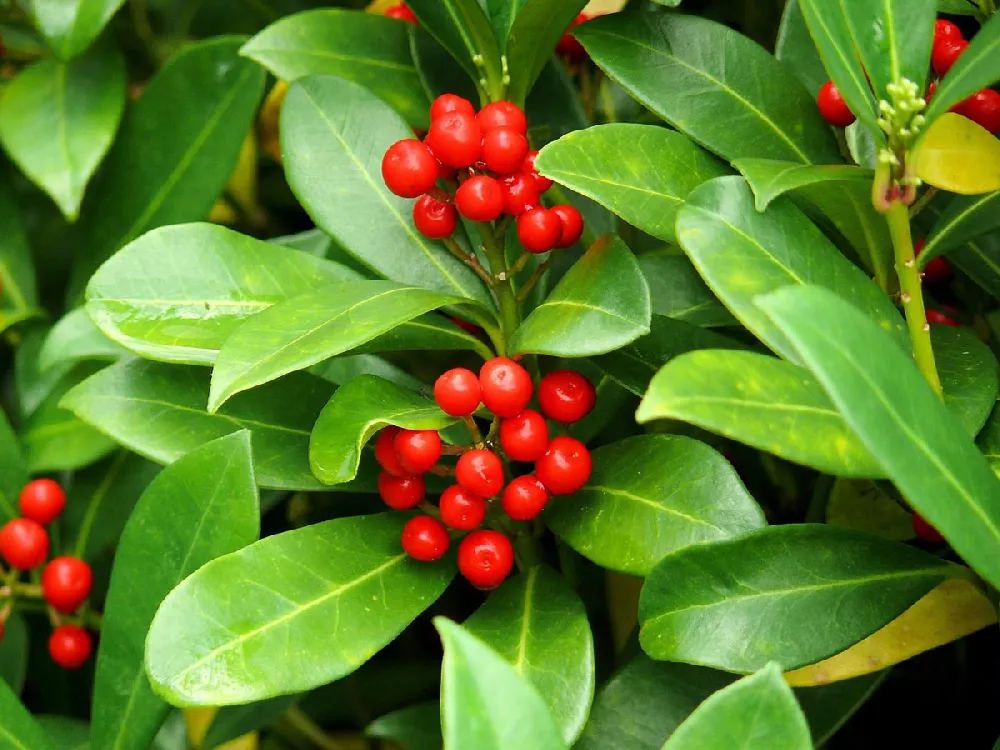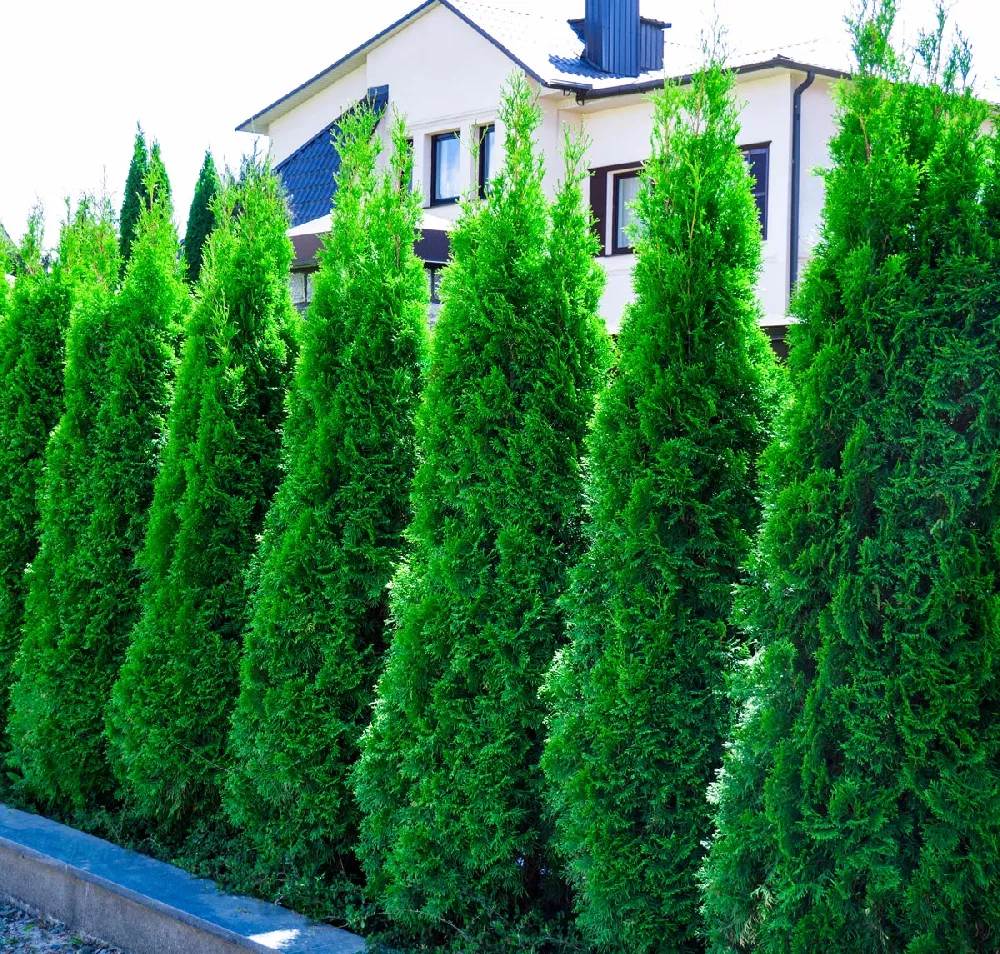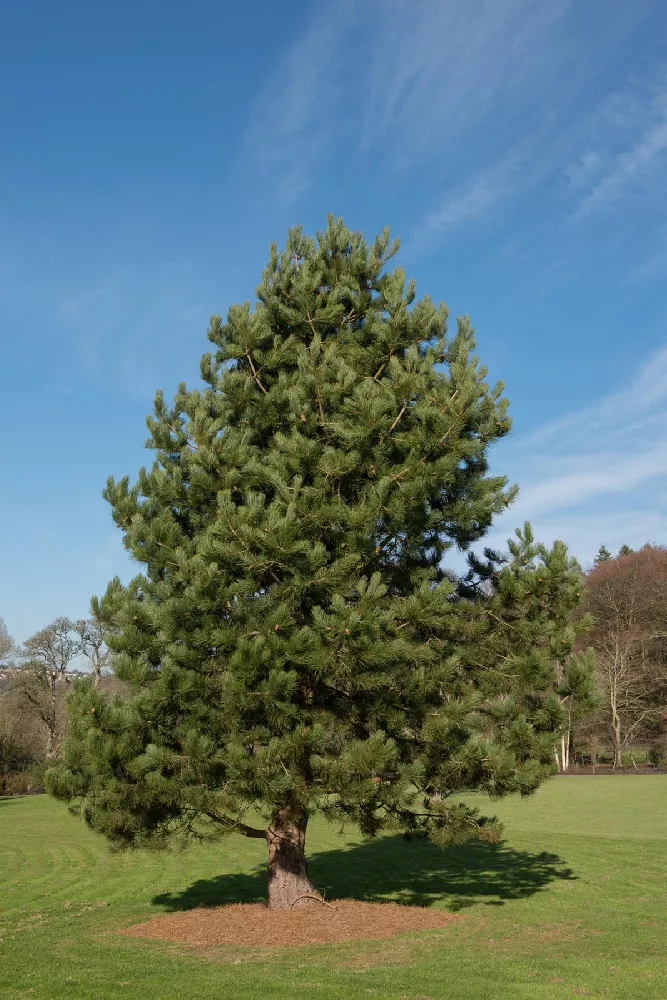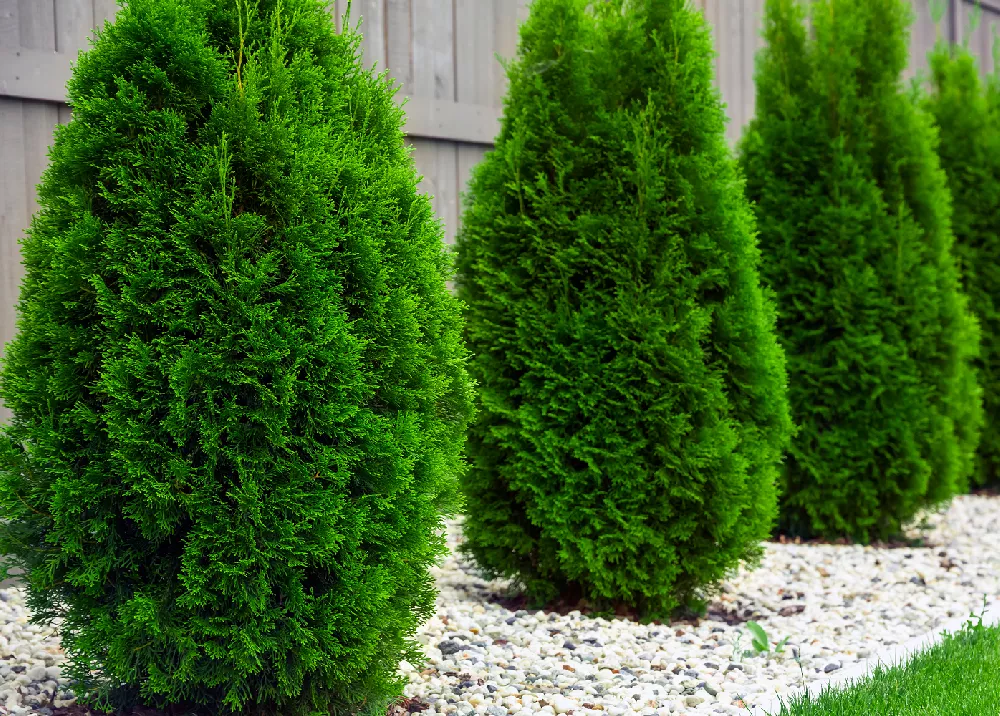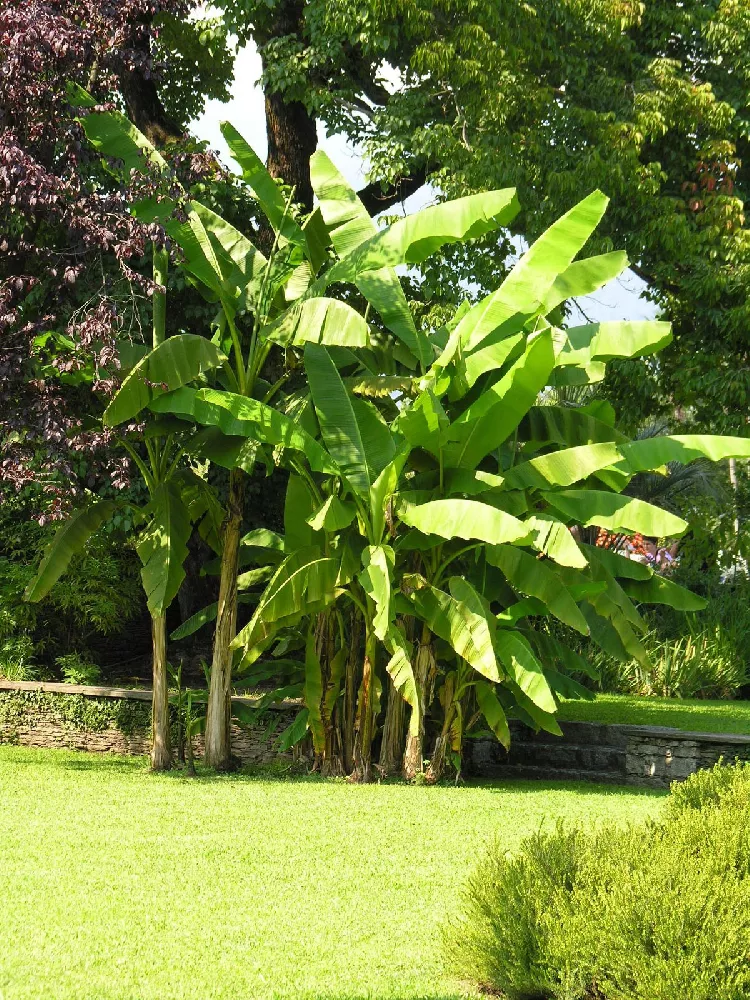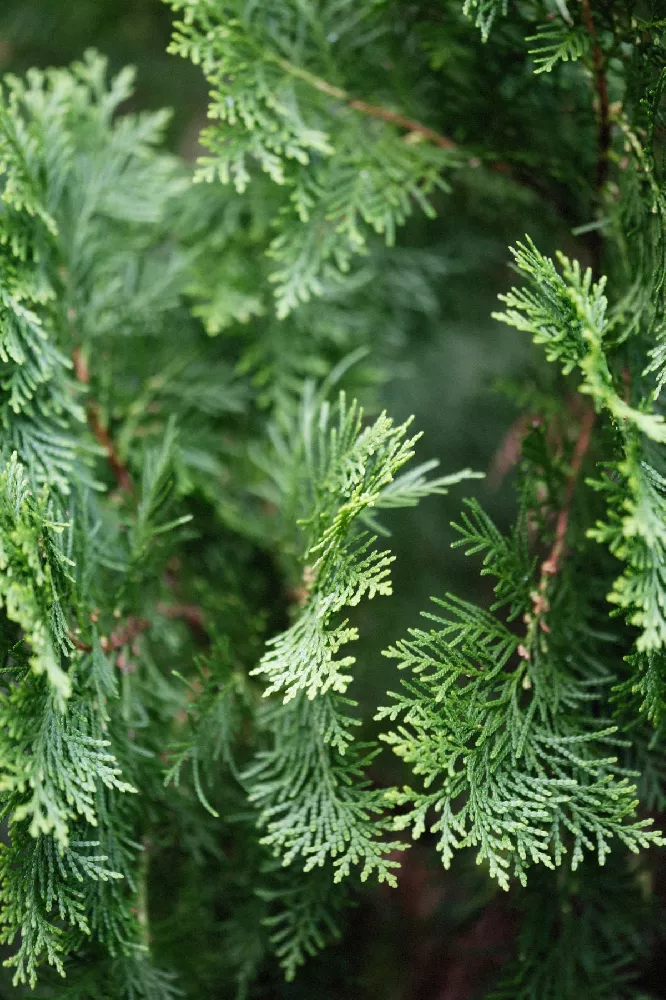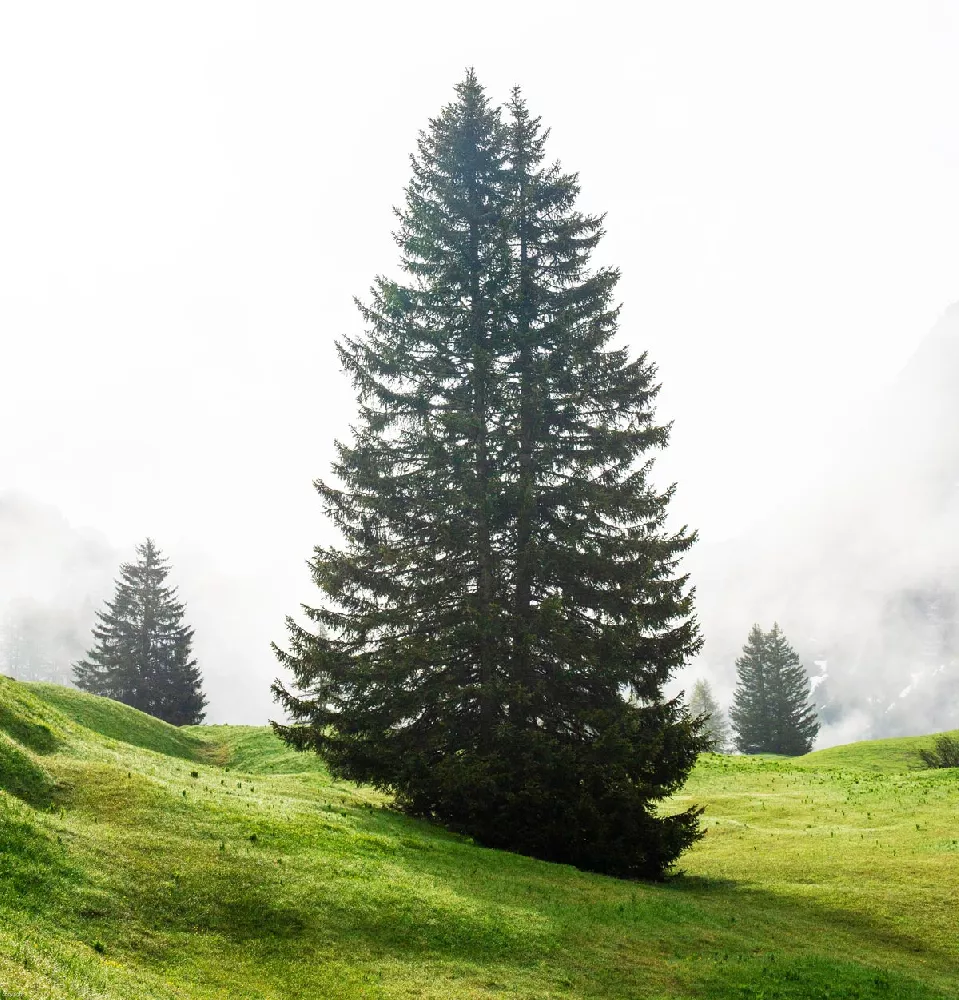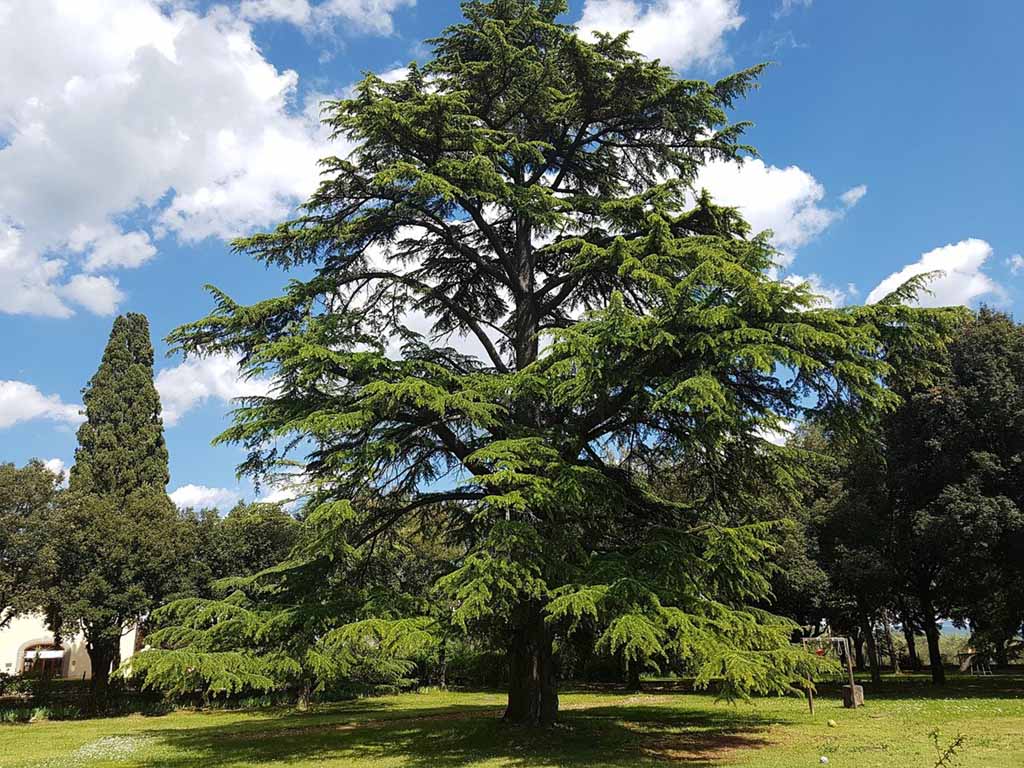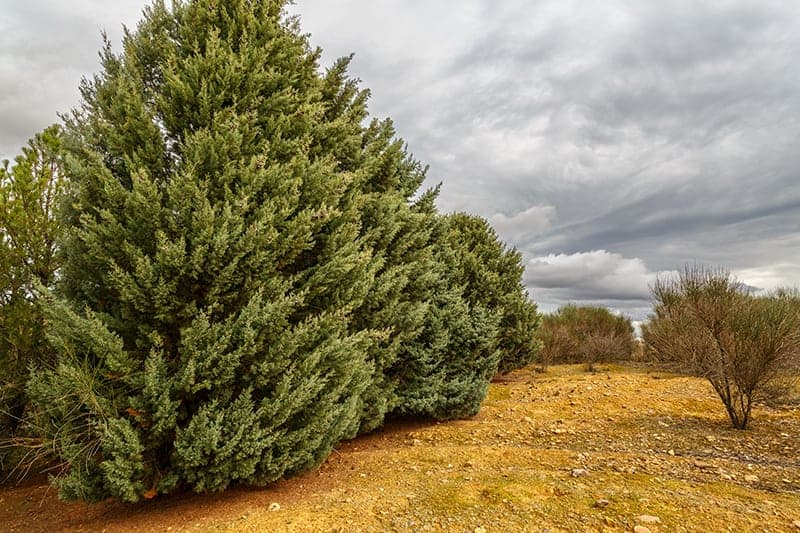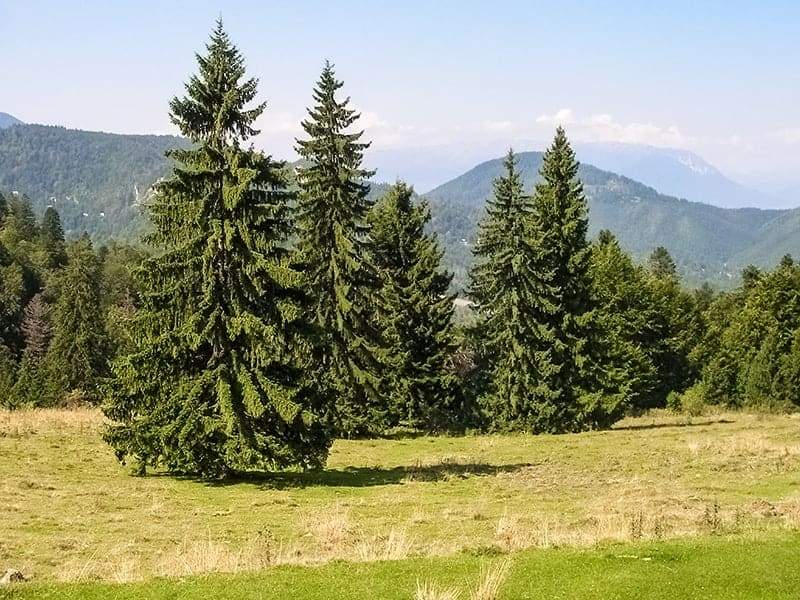- Home >
- Evergreen Trees
Evergreen Trees for Sale - Buying & Growing Guide
Filters
Price Range
Growing Zones
Plant Type
Sunlight
Mature Height
Plant Characteristics
101 Results
-
Growing Zone(s): 4-11 patio / 9-11 outdoors$99.95
$179.95Save up to 44% -
Growing Zone(s): 3-7$72.95
$144.95Save up to 49% -
Best SellerGrowing Zone(s): 5-9$40.95
$43.95Save up to 6% -
Growing Zone(s): 3-8$36.95
$48.95Save up to 24% -
Growing Zone(s): 4-8$30.95
$45.95Save up to 32% -
Growing Zone(s): 3-9$93.95
$134.95Save up to 30% -
Growing Zone(s): 2-7$40.95
$59.95Save up to 31% -
Growing Zone(s): 5-8$61.95
$82.95Save up to 25% -
Growing Zone(s): 5-11$46.95
$57.95Save up to 18% -
Growing Zone(s): 5-9$45.95
$77.95Save up to 41% -
Growing Zone(s): 6-10$189.95
$229.95Save up to 17% -
Growing Zone(s): 2-6$31.95
$51.95Save up to 38%
Evergreen Trees – Buying & Growing Guide
From glittering Christmas trees to pot-bound Norfolk pines, evergreens are everywhere. Since they remain green throughout the winter, they provide scope and texture to the cold-season garden. With an immense range of species — pine, spruce, fir, juniper, and more — they provide variety that looks elegant in any empty garden spot where they are planted.
How to Grow Evergreen Trees
How to plant evergreen trees
Since there are many varieties of evergreen tree, also known as conifers, check the tags for the one you have purchased to determine how much sun the sapling will need and other requirements. Plant your tree carefully in good, loamy soil. Add organic material such as compost or leaf mold if the soil is sandy or clay-heavy.
Before planting, make sure the root ball is damp and water it thoroughly if it isn’t. Tease out any circling roots so they won’t strangle the tree, but disturb the root ball itself as little as possible. Dig a hole that’s two to three times bigger than the root ball and place the sapling in the center of the hole with the top of the root ball at ground level. Cover with the dirt you removed in digging the hole (called “backfilling”) with good soil, firming it down thoroughly.
Give your sapling a good watering once it’s in place. Build up a low berm of soil around the tree, a foot or so away from the trunk, so that water is contained and seeps down into the roots.
How to achieve maximum results
Although evergreens are generally easy-care plants, you’ll have the best results if you pamper your newly-planted tree for a few months. Regular, deep watering is necessary unless you’re getting at least an inch of rain a week. Mulch the area around the tree’s drip line with an organic mulch, keeping it pulled back from the trunk itself.
How to Care for Evergreen Trees
Watering and nutrients
With regular rainfall, your evergreen shouldn’t need supplemental watering, but if your region experiences drought conditions, give your tree about one inch of water per week, especially while it’s young. Before the first fall frost, give your tree a deep watering. Monitor your tree throughout the winter to ensure that it doesn’t dry out and start dropping needles. If your tree does start losing needles, water it well. Mulching also helps conserve water.
Regular fertilizing should not be needed. If your tree has brown needles or appears to be failing, dig a balanced tree fertilizer into the soil around the tree’s drip line in the spring. You won’t see immediate improvements, but if the tree doesn’t perk up within six months or so, consult an arborist.
Pollination
Evergreen trees are pollinated by the wind. Pollen is produced in cones, which mature slowly and can be either male or female. Some evergreens are monoecious, meaning that one tree will have both male and female cones; others are dioecious, with male and female cones appearing on different trees.
Pruning
Evergreens don’t require regular pruning. In the spring, assess your tree’s shape. If there are crossed or diseased branches, prune them out. You may also prune for shape—for example, forming your trees into a neat hedge. Even without pruning, you should see robust growth throughout the spring and summer.
Pests, diseases, and animals
Diseases and pests of the evergreen may be specific to certain varieties. For example, cytospora canker is found mainly on spruce trees. Other common diseases include rhizosphaera needle cast and brown spot, which affects Scots and ponderosa pines.
Scale insects attack junipers and other pines, and cause yellowing of foliage and branch death. A dormant oil spray in spring will control them. Bagworms, gypsy moths, and leaf miners also prey on evergreens. Gypsy moths may create unsightly, wide-spread webbing on trees. You can control them by trapping, or by using Bacillus thuringiensis kurstaki, which is a naturally occurring agent.
Voles and woodpeckers will also damage evergreens. Yellow belly sapsuckers may drill feeding holes in your trees, which are often mistaken for canker disease. Hardware cloth wrapped around the base of the tree should deter voles during the winter, when they feed on roots and bark.
Types of Evergreen Trees
1. Fir Trees
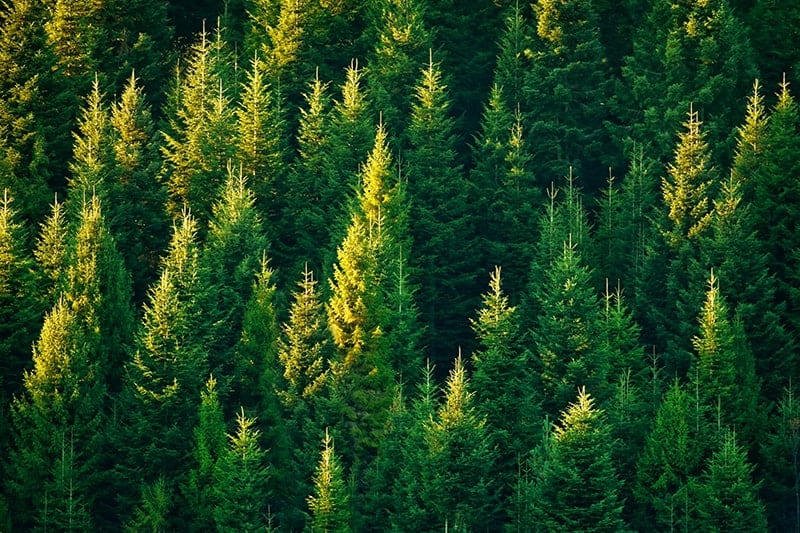
Scientific Name ‘Abies’ genus
Mature Size: Up to 250 feet tall
Hardiness Zone: 3-8
Light: Full sun to partial shade
Water: Average moisture needs
Soil: Well-draining, acidic
Cultivars and Varieties: European Silver Fir-Abies alba, Pacific Silver Fir-Abies amabilis, Balsam Fir-Abies balsamea, Greek Fir-Abies cephalonica, White Fir-Abies concolor, Fraser Fir-Abies fraseri, Grand Fir-Abies grandis, Korean Fir-Abies koreana, Alpine Fir-Abies lasiocarpa, Spanish Fir-Abies pinsapo, Blue Noble Fir-Abies procera
Fir trees are evergreen conifer trees that are native to mountainous regions of Europe, Asia, North America, and North Africa. There are around 50 different species of tree within the Fir genus, and these are broadly suitable for growing in USDA hardiness zones 3-8, with some variation between specific types, for example, the Balsam Fir is one of the hardiest types of fir trees, able to grow in zones 3-6, whereas the Spanish Fir prefers warmer temperatures and will grow in zones 6 and 7. The tallest fir tree is the Grand Fir, which can reach heights of around 250 feet, though many other types of fir trees fall into the medium to large tree category. There are also some dwarf cultivars of fir trees that are great for growing in smaller gardens, with a height expectancy of between three and six feet, such as the ‘Archer’s Dwarf’ White Fir tree.
Fir trees have a majestic ornamental appeal, with needle-like foliage that is slightly flattened. The needles vary in color between species, from blue-green to dark green and gray-green. They produce cones that stand up on the tips of branches like candles. This is unusual for cone-producing trees and is one way in that to identify whether a tree is a fir tree or a different type of conifer. The fir tree cones can be green, purple, or blue when young. As they become pollinated and age, they will develop a brown color.
Fir trees are popularly cultivated as ornamental trees in parks and public spaces, or home gardens. They have little value as timber, and instead, they are sometimes used as pulpwood to create paper or plywood. Many types of firs are considered excellent Christmas trees, and they are widely grown for this purpose. In particular, Noble Firs, Balsam Firs, and Fraser Firs are popular as Christmas trees because they have attractively scented needle-foliage that does not shed much even once it has dried out. Fir trees generally are low care and low maintenance. They adapt well to a range of soil types, including dry soils and poor soils, though they perform best in well-draining soils that are slightly acidic and kept evenly moist. Some fir trees prefer full sun, but some can grow in partial shade.
2. Cedar Trees
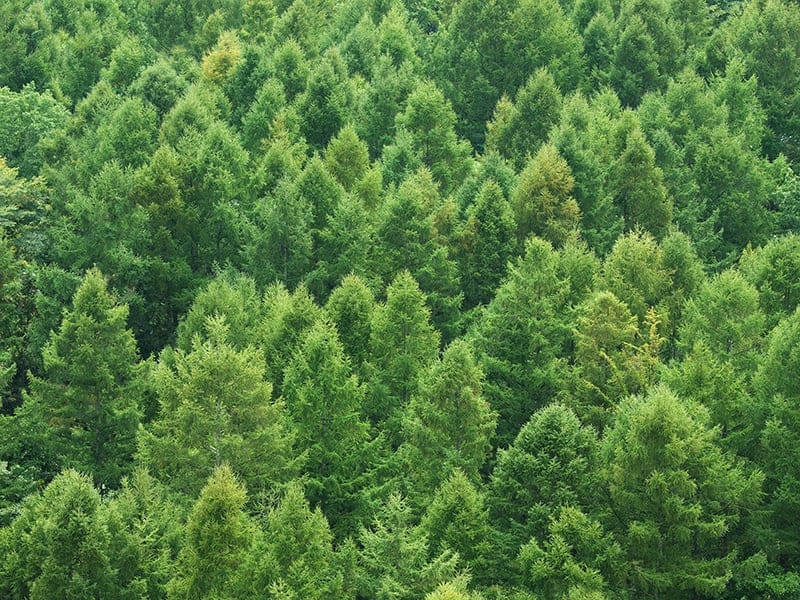
Scientific Name ‘Cedrus’ genus
Mature Size: Up to 160 feet tall
Hardiness Zone: 6-9
Light: Full sun
Water: Average moisture needs
Soil: Well-draining
Cultivars and Varieties: Atlas Cedar-Cedrus atlantica, Deodar Cedar-Cedrus deodara, Cedar of Lebanon-Cedrus libani, Cyprus Cedar-Cedrus Brevifolia
Cedar trees are large evergreen conifer trees that are native to mountainous regions of the Meditteranean and the Western Himalayas. There are many types of trees that are commonly known as cedar trees; however, there are only four species of true cedar trees; these are the Atlas Cedar, Deodar Cedar, Cyprus Cedar and Cedar of Lebanon. ‘False’ cedar trees include the Bermuda Cedar and Mountain Cedar, which are actually both types of Juniper. Cedar trees can reach great heights of up to 160 feet, though they are most commonly found at mature heights of between 80 and 100 feet.
The foliage of the cedar tree is needle-like and arranged in dense clusters that look like small spiked balls. These leaves range in color depending on species and will be either blue-green or dark, deep green. They produce oval-shaped cones that can measure up to five inches long. These emerge green but become brown when mature. Cedar trees fare best in temperate climates, ideally around zone 7 or 8, though they can also be grown in zones 6 and 9. The Cedar of Lebanon tends to prefer growing in cooler climates than the other cedar trees and is happiest at zone 6 temperatures.
These trees in their natural habitat will endure cold winters and warm summers, but they do not perform well in very cold or very hot climates. They are used to getting plenty of rainfall in winter and times of drought during summer, so they are accustomed to growing in both wet and dry soils. Ideally, cedar trees will be grown in a well-draining soil that is kept evenly moist, in a position of full sun.
3. Cypress Trees
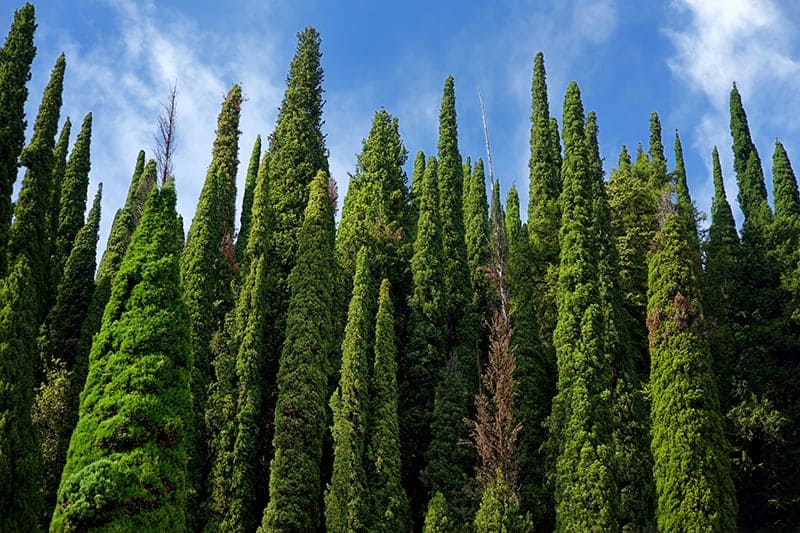
Scientific Name ‘Cupressus’ genus
Mature Size: Up to 130 feet tall
Hardiness Zone: 6-11
Light: Full sun
Water: Average moisture needs
Soil: Well-draining
Cultivars and Varieties: Monterey Cypress-Cupressus macrocarpa, Italian Cypress-Cupressus sempervirens, Moroccan Cypress-Cupressus atlantica, Vietnamese Cypress-Cupressus vietnamensis
Cypress trees are a genus of evergreen conifers that are native to a range of temperate climates around the world, including Asia, North America, and the Middle East. Cypress trees have scale-like foliage, which can vary between species from yellow-green in color to blue-green and deep green. Their cones can be oblong or spherical. Many types of cypress trees have an attractive aroma that can range from spicy to citrus-scented.
These trees are cultivated heavily for their ornamental value and are especially popular in Asia, where they line parks and outdoor public spaces. Cypress trees produce strong and durable wood, so they are also cultivated for use as timber. These trees grow easily with very minimal maintenance. They do not require pruning and will adapt to a variety of soils, though they prefer a well-draining and moist soil. Cypress trees will withstand periods of drought when mature. They are heat tolerant and prefer a full sun position, but they cannot grow in cold regions.
4. Citrus Trees
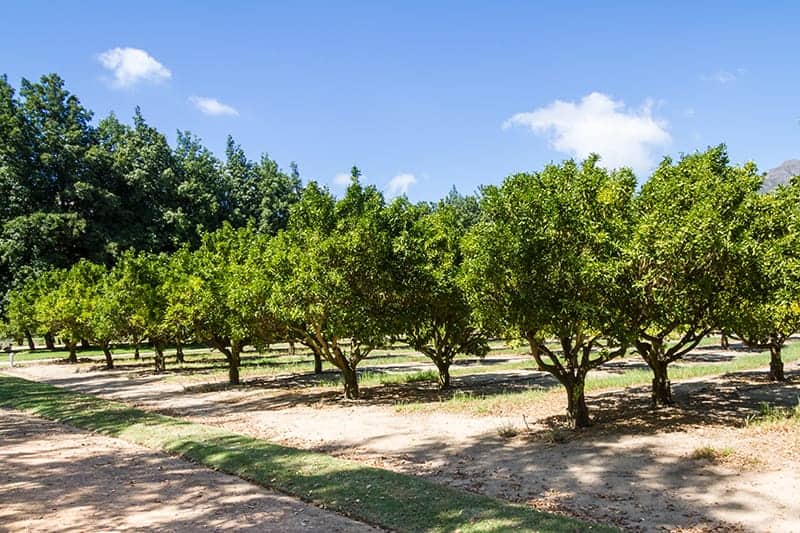
Scientific Name ‘Citrus’ genus
Mature Size: Up to 50 feet
Hardiness Zone: 9-11
Light: Full sun
Water: Average moisture needs
Soil: Well-draining, neutral, fertile
Cultivars and Varieties: Lemon Tree-Citrus x limon, Mandarin Tree-Citrus reticulata, Kumquat Tree-Citrus japonica, Key Lime Tree-Citrus × aurantifolia
Citrus plants are a range of evergreen trees and shrubs that are native to Australia and Asia, though they have been cultivated around the Meditteranean region since ancient times and are now a common part of the landscape. Citrus trees were also introduced to North America by Spanish traders, and they are now an economically important plant in many states, such as Florida. Some citrus trees are able to grow up to 50 feet, but more commonly, they reach a mature height of between 20 and 30 feet. These small to medium trees are also ideal for growing in a container, which will restrict their growth. As citrus trees thrive in hot temperatures, they are only suitable for growing in warm winter climates. However, many people in cooler climates grow citrus trees in containers that are kept outside in the summer and moved indoors before the first frost arrives.
The foliage of citrus trees is typically very ornamental, in bright shades of green. Flowers are produced on these trees, usually in shades of creamy white, sometimes flushes with pink. The flowers are typically heavily scented. These flowers will give way to fruits that mature over the space of several weeks or months. Citrus trees are very rewarding trees to grow, offering a lot of ornamental interest all year round. The fact that they produce delicious fruits that can be eaten raw or used in cooking is an added bonus. Citrus trees grow easily if their growing conditions are met. They need moist soil that is well-draining and has a neutral pH. Citrus trees that are grown in alkaline soil develop a deficiency that causes their leaves to turn yellow and fall from the tree. They can be quite thirsty plants, so water them freely but ensure their soil is not soggy or waterlogged. Grow your citrus tree in full sun and sheltered position.
5. Gum Trees
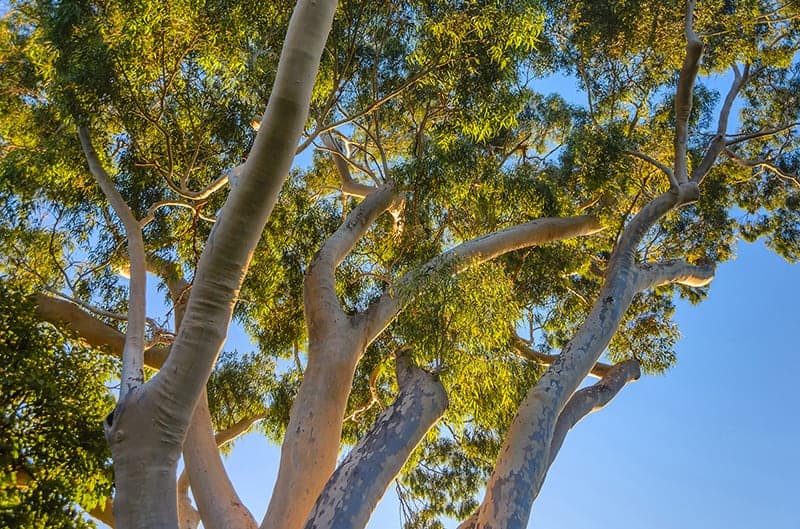
Scientific Name ‘Eucalyptus’ genus
Mature Size: Up to 100 feet tall
Hardiness Zone: 7-11
Light: Full sun
Water: Maintain moist soil
Soil: Well-draining, fertile
Cultivars and Varieties: Mountain Gum-Eucalyptus dalrympleana, Rainbow Gum-Eucalyptus deglupta, Cider Gum-Eucalyptus gunnii, Snow Gum-Eucalyptus pauciflora, Spinning Gum-Eucalyptus perriniana
Gum trees are a selection of flowering trees that belong to the Eucalyptus family. They might be commonly referred to as Eucalyptus or Gums, the latter being a reference to the fruit they produce that is called a ‘gumnut.’ There are several hundred different species of Gum trees, and they are all native to Australia. Gum trees make up around three-quarters of the forests in Australia, and they have become adapted to survive fires that frequently affect Australian landscapes. These are incredibly attractive trees, which are cultivated in warm climates around the world for their ornamental value. They are also fast-growing and produce strong timber, which makes them ideal for commercial cultivation.
One of the most interesting features of gum trees is their bark. A new layer of bark is produced internally each year, and the outermost layer gets shed. The outer layer may fall off in chunks or peel away in ribbons, depending on the species of tree. A fresh layer of bark will then be exposed, which can be multi-colored and randomly patterned, with strips of blue, yellow, purple, orange, red, and green. Their foliage is attractively scented due to the presence of oil glands that contain essential oil. Most gum trees have glossy green leaves that droop at a downwards angle.
The majority of gum trees are evergreen, though there are a few rare species that will lose their leaves each year. Gum trees produce fluffy-looking flowers that can be red, pink, yellow, or white. These are followed by woody fruits. Gum trees grow quickly in ideal conditions. They thrive in full sun, warm temperatures, and consistently moist soil. They are intolerant of cold and can become damaged even in light frosts. They should be grown in a well-draining soil because they have relatively high water needs. Aim to keep soil evenly moist.
6. Olive Trees
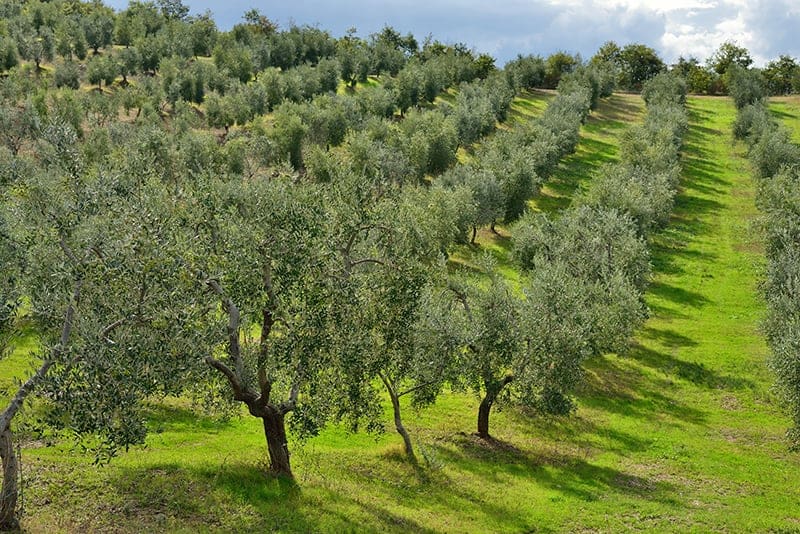
Scientific Name Olea europaea
Mature Size: Up to 50 feet
Hardiness Zone: 8-11
Light: Full sun
Water: Average moisture needs
Soil: Well-draining, fertile
Cultivars and Varieties: Olea europaea ‘Sativa’, Olea europaea ‘Frantoio’, Olea europaea ‘Manzanillo’, Olea europaea ‘Arbequina’, Olea europaea ‘Sevillano’
Olive trees are evergreen trees that are native to warm climates around the world, including Africa, Asia, and the Meditteranean region. They are slow-growing trees that can eventually reach up to 50 feet tall though they are more commonly seen at between 20 and 30 feet in height. This ancient tree is valued for its ornamental value, as well as the fruits it produces. Olive trees are widely cultivated in Mediterranean countries for their olives and the production of olive oil. It is of huge commercial and agricultural importance in this region. If you live in USDA hardiness zones 8-10, then you can grow your own olive tree in your yard, but even those in cooler climates can grow olive trees if they are grown in a container and then housed indoors over winter.
Olive trees have a beautiful architectural frame with long-reaching and twisting branches. Their foliage remains attractive all year round, with narrow gray-green leaves that are silver-colored on the underside. Panicles of flowers are produced in the middle of spring, with masses of creamy white small blooms. These flowers give way to olives, which start out green and will eventually mature to black. If you wish to grow fruits on your olive tree, you will need to be patient or purchase a tree that is already several years old, as olive trees don’t typically start producing flowers and fruits until year seven or eight. They also will only bloom in climates that experience hot summers and cool, wet winters. Growing two different types of olive trees will also increase the size of your yield, as trees that cross-pollinate tend to produce more olives. Olive trees need to be grown in a bright and sunny spot, in well-draining soil. They should be watered deeply and regularly when young, though they gain tolerance of drought once established.
7. Spruce Trees
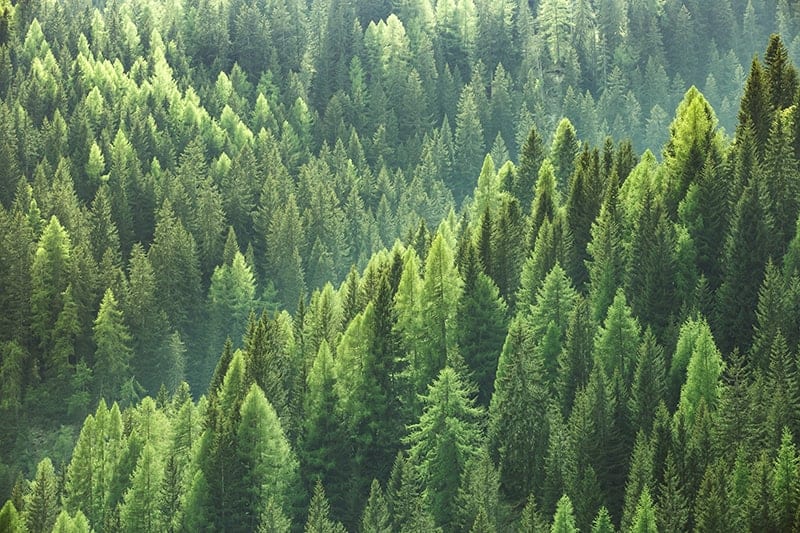
Scientific Name ‘Picea’ genus
Mature Size: Up to 200 feet tall
Hardiness Zone: 2-8
Light: Full sun
Water: Average moisture needs
Soil: Well-draining, acidic
Cultivars and Varieties: Norway Spruce-Picea abies, White Spruce-Picea glauca, Black Spruce-Picea mariana, Serbian Spruce-Picea omorika, Colorado Spruce-Picea pungens
Spruce trees comprise around 35 species in the ‘Picea’ genus. These are all evergreen trees that are native to Europe, North America, and Asia. Spruce trees typically have a tall and slender conical or cylindrical shape. They have needle-like foliage that can be dark green or blue-green and produce cones that droop downwards after pollination.
They are popular trees that are cultivated in temperate climates around the world for their ornamental value. They grow quickly to a large size and therefore are useful in producing timber. Spruce trees also represent one of the most important types of trees grown for use as pulp. Spruce trees are ideal for producing strong paper as they have long fibers. Many types of spruce trees, such as the Norway Spruce, are also widely cultivated to be used as Christmas trees. Most spruce trees are easy to grow because they are tolerant of a wide range of growing conditions. They will adapt to a variety of soil types, including clay soil or sandy soil. They will tolerate drought but prefer evenly moist soil. Spruce trees generally prefer to be grown in cooler climates, and though they will withstand warm summers, they cannot tolerate high humidity or extreme heat.
8. Pine Trees
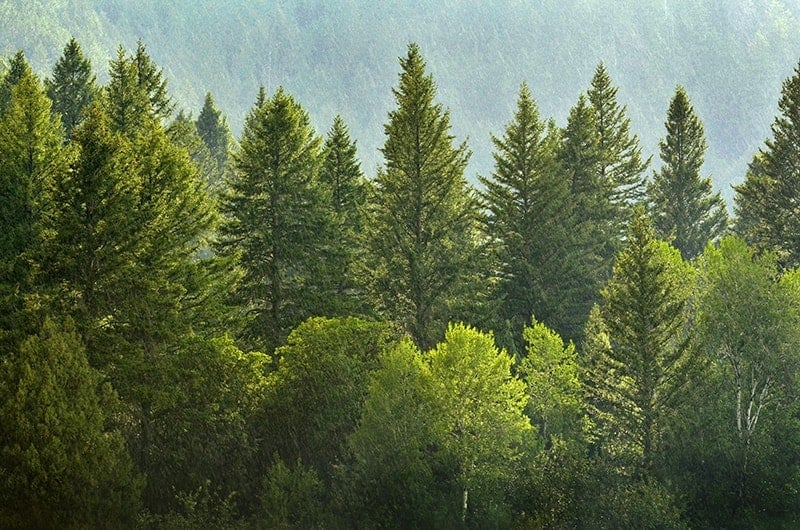
Scientific Name ‘Pinus’ genus
Mature Size: Up to 250 feet tall
Hardiness Zone: 2-10
Light: Full sun
Water: Average moisture needs
Soil: Well-draining
Cultivars and Varieties: Jack Pine-Pinus banksiana, Shore Pine-Pinus contorta, Japanese Red Pine-Pinus densiflora, Limber Pine-Pinus flexilis, Sugar Pine-Pinus lambertiana, Longleaf Pine-Pinus palustris, Eastern White Pine-Pinus strobus
Pine trees are evergreen conifer trees in the ‘Pinus’ genus. They are native to Europe, Asia, North America, and Central America. There are over 120 species of pine trees, and the climates they can grow in vary greatly. The Red Pine and the Dwarf Siberian Pine are two examples of hardy pine trees that are suitable for growing in USDA zones 2 and above. Other pine trees, such as the Italian Stone Pine, prefer milder climates and can be grown in zones 9-11. These can be extremely tall trees that can reach up to 250 feet in height, though most pine trees will get to mature heights of between 60 and 150 feet. They are a long-lived and attractive tree that is popularly cultivated in parks and outdoor public spaces.
The shape of a pine trees’ canopy can vary drastically between species, with some branching outwards to give a wide or rounded shape and others being narrow and conical. They have green foliage that is needle-like when mature. They produce cones, with both male and female cones being present on the same tree. Male cones drop to the ground once their pollen is shed, whereas the female cones will persist on the tree for several years at a time. These cones are the largest and strongest of all types of conifer trees, making them very popular for crafting.
Pine trees are widely cultivated for their timber. In fact, pine trees are the most commercially significant species of trees for lumber production in the world. Pinewood is commonly used to make furniture, cabinetry, roofing, and flooring. This wood is strong and durable but has no resistance against rotting, and so it is predominantly used for indoor projects. Pine trees thrive in full sun. They prefer a well-draining soil that is kept moist, but they are drought tolerant when mature.
